Opinion & Analysis
Hunt: Breaking down the best players on tour by category
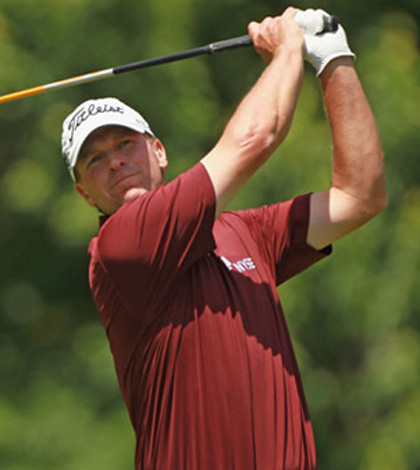
I’m often asked by my readers what current PGA Tour player’s game I would prefer to have based upon my statistical research. To answer their question, I decided to look at the data and split the game into certain key metrics and base it upon a Tour player’s history. Hopefully for those at home, this will get people pointed in the right direction as to which players to observe when it comes to certain categories of the game.
DRIVING THE BALL
Variables to consider:
- Driving distance.
- Fairway percentage.
- Average distance from the edge of the fairway.
- Percent of times in a fairway bunker.
- “Missed Fairway — Other.”
Based on those variables, I use an algorithm that determines how effectively a player drives the ball. I call it “driving effectiveness.”
I also consider how well a golfer drives the ball off the tee when he is not hitting his driver. Looking at ShotLink data, I can tell you that most golfers would be surprised how many Tour players struggle hitting a 3 wood off the tee. We also have to consider ball height as in general, as high ball hitters have statistically fitted into today’s modern courses. I believe this is because the modern TPC courses are filled with forced carries.
With that, I would pick Boo Weekley, who has finished in my top 10 in Driving Effectiveness in each of the last three seasons. He’s one of the best fairway wood players in the game as well. He hits it long, accurate and precise.
Honorable Mention: Keegan Bradley, Graeme McDowell, Hunter Mahan, Graham DeLaet
Top Newcomer: Jordan Spieth
BIRDIE ZONE PLAY (75 to 125 YARDS)
Birdie Zone play (along with the rest of the zones) is based on the player’s average proximity to the cup. What I have generally found is that the golfers who perform best from the Birdie Zone tend to have less forward shaft lean at impact. There are some players who are usually very good Birdie Zone players such as Sergio Garcia. This makes me believe that Birdie Zone play is more about controlling the shaft lean and that the players with less forward shaft lean tend to do the best job of controlling it.
There are quite a few players on Tour that consistently perform well in the Birdie Zone, but I would pick Steve Stricker above them all based on his performance over the years.
Honorable Mention: Brian Gay, Camilo Villegas, Charlie Wi, Luke Donald, Charl Schwartzel
Top Newcomer: Paul Haley II
SAFE ZONE PLAY (125 to 175 YARDS)
The Safe Zone consists of short and mid irons for Tour players. It is also the zone where the most frequent amount of approach shot happens.
There are generally three ways to become extremely good in the Safe Zone:
- Keep the drive in the fairway a high percentage of time (80-plus percent).
- Become an excellent player out of the rough.
- Be a superior irons player from this distance.
For this article, I’m more concerned with the golfer’s pure ability to hit shots from this distance instead of the golfer who consistently keeps his ball in the fairway and ends up having an easier approach shot into the green than the golfer who is hitting shots out of the rough.
Out of all of the players, I would give this to Bud Cauley, as he has been excellent the past two years from the Safe Zone, whether he is hitting it from the fairway or the rough.
Honorable Mention: Lee Westwood, Tim Clark, Luke Donald, Ken Duke, Rory Sabbatini
Top Newcomer: Jordan Spieth
DANGER ZONE PLAY (175 to 225 YARDS)
There is a misconception that long hitters or excellent drivers of the ball goes hand in hand with good Danger Zone play. The assumption is that a long hitter will be hitting shorter clubs into the hole, and therefore has an easier shot. While that is true, he still has to be able to hit the ball well even if he has a shorter club. And there are plenty of excellent drivers of the ball that cannot hit it from the Danger Zone (i.e. Blake Adams, John Rollins and Bill Haas). Conversely, there are excellent Danger Zones that are terrible drivers of the ball (Mickelson, Romero and Michael Thompson).
One way to “cheat the system” is for players to keep the ball in the fairway when they are in the Danger Zone. I recommend this for ALL golfers when they are facing a very long par 4. Focus on finding the fairway with your driver instead of trying to swing harder in hopes of gaining a few yards.
Like the Safe Zone, I’m more interested in a “pure Danger Zone player” than one who smartly finds the fairway here repeatedly. That’s why I take Robert Garrigus. Most of the longer hitters on Tour hit very few of their Danger Zone shots from the rough because they usually are rarely in the Danger Zone on long par 4’s. Instead, they are usually hitting these Danger Zone shots from the tee box on par 3’s.
Garrigus is one of the exceptions, and he does hit quite a few Danger Zone shots from the rough, which indicates he is fairly conservative off the tee. However, he’s continually one of the best on Tour from the Danger Zone and is ranked first, by a long shot, from the Danger Zone this season.
Honorable Mention: Jim Furyk, David Toms, Boo Weekley, Phil Mickelson, Tiger Woods
Top Newcomer: D.H. Lee
225 to 275 YARDS ZONE
This zone is what I call a “volatile” metric, meaning that players rarely perform well from here year after year. One year a player may be one of the best on Tour and then the next year they may be one of the worst. We start to see this distance favoring longer hitters a little more noticeably.
It’s hard to argue against Tiger, since no one has hit more clutch shots from this distance than he has over the years.
Honorable Mention: Gary Woodland, George McNeill, Boo Weekley, Scott Stallings, Michael Thompson
Top Newcomer: Morgan Hoffmann
SHOTS FROM THE ROUGH
Shots from the rough are a bit difficult to quantify because rough tends to get longer as the ball is hit farther away from the fairway. While the data suggests that shots from the rough favor players who generate more club head speed, there are plenty of players with less club head speeds that play well from the rough. But, the issue may be that those lower club head speed players are keeping the ball closer to the edge of the fairway and are hitting from shorter rough grass.
Typically, Sergio Garcia has been one of the very best players from the rough over the years. However, I would take Mickelson, who has been practically as good. And if there was ever a golfer I needed to hit an impossible shot from the rough, it would be Lefty.
Honorable Mention: Sergio Garcia, Chris Couch, Dustin Johnson, Jonathan Byrd, Ken Duke
Top Newcomer: Morgan Hoffmann
SHOTS FROM THE FAIRWAY
Shots from the fairway actually have a far greater correlation to a golfer’s success on Tour than shots from the rough. That’s because most of their approach shots come from the fairway or the tee box. Therefore, shots from the fairway do not favor any style of play other than quality ballstrikers.
For my money, I would take Steve Stricker in a Big Break style contest if every shot was from the short grass. Stricker also finished first in my Shots from the Fairway metric in 2012.
Honorable Mention: Jeff Maggert, Jim Furyk, Rory McIlroy, Webb Simpson, Tiger Woods
Top Newcomer: Brian Stuard
PLAYING IN WINDY CONDITIONS
I have been doing some preliminary research on playing into the wind. From what I have researched thus far, it tends to favor golfers whom have a downward attack angle with the driver and are very good from the Birdie Zone. My initial thoughts is that the downward attack angle keeps the ball low, which makes them more comfortable in the wind. I think the Birdie Zone play has to do with having more Birdie Zone shots on the par 5’s and thus, the better wedge players can convert birdies on those holes.
My initial research shows that the best player in windy conditions (13-plus mph winds) is Charl Schwartzel.
Honorable mention: Tiger Woods, Boo Weekley, Chris Stroud, John Merrick, Trevor Immelman
Top Newcomer: N/A
SHORT GAME PLAY (LESS THAN 20 YARDS)
Part of short game play is not only the golfer’s skill around the green, but where they leave their approach shots. It is impossible to decipher where exactly the approach shots are left. That would make a strong case for Mickelson. But, I will go with Chris Riley, who has consistently been a top-5 player in Short Game play for years.
Honorable Mention: Phil Mickelson, Brian Gay, Charlie Wi, Ian Poulter, Jerry Kelly
Top Newcomer: James Hahn
PUTTING
This is based off the metric “Putts Gained.” The research has shown that putts from 3 to 15 feet have the largest correlation to Putts Gained performance. This is in part because putts made from longer than 15 feet are a volatile metric. In fact, the average Tour player makes one birdie putt from longer than 25 feet every 98 holes they play. As I have discussed here before, going low on Tour is about getting the ball inside 15 feet to the hole for birdie on a consistent basis — it is not about making a lot of bombs.
There are a lot of terrific putters on Tour. But, the one player who has stood out has been Luke Donald. Donald ranked first in Putts Gained in 2010, 2011 and 2012. He “slipped” last year falling to third in the metric.
Honorable Mention: Greg Chalmers, Aaron Baddeley, Tiger Woods, Bryce Molder, Brian Gay
Top Newcomer: Russell Henley
- LIKE2
- LEGIT0
- WOW0
- LOL0
- IDHT0
- FLOP0
- OB0
- SHANK0
19th Hole
Vincenzi’s 2024 Zurich Classic of New Orleans betting preview

The PGA TOUR heads to New Orleans to play the 2023 Zurich Classic of New Orleans. In a welcome change from the usual stroke play, the Zurich Classic is a team event. On Thursday and Saturday, the teams play best ball, and on Friday and Sunday the teams play alternate shot.
TPC Louisiana is a par 72 that measures 7,425 yards. The course features some short par 4s and plenty of water and bunkers, which makes for a lot of exciting risk/reward scenarios for competitors. Pete Dye designed the course in 2004 specifically for the Zurich Classic, although the event didn’t make its debut until 2007 because of Hurricane Katrina.
Coming off of the Masters and a signature event in consecutive weeks, the field this week is a step down, and understandably so. Many of the world’s top players will be using this time to rest after a busy stretch.
However, there are some interesting teams this season with some stars making surprise appearances in the team event. Some notable teams include Patrick Cantlay and Xander Schauffele, Rory McIlroy and Shane Lowry, Collin Morikawa and Kurt Kitayama, Will Zalatoris and Sahith Theegala as well as a few Canadian teams, Nick Taylor and Adam Hadwin and Taylor Pendrith and Corey Conners.
Past Winners at TPC Louisiana
- 2023: Riley/Hardy (-30)
- 2022: Cantlay/Schauffele (-29)
- 2021: Leishman/Smith (-20)
- 2019: Palmer/Rahm (-26)
- 2018: Horschel/Piercy (-22)
- 2017: Blixt/Smith (-27)
2024 Zurich Classic of New Orleans Picks
Tom Hoge/Maverick McNealy +2500 (DraftKings)
Tom Hoge is coming off of a solid T18 finish at the RBC Heritage and finished T13 at last year’s Zurich Classic alongside Harris English.
This season, Hoge is having one of his best years on Tour in terms of Strokes Gained: Approach. In his last 24 rounds, the only player to top him on the category is Scottie Scheffler. Hoge has been solid on Pete Dye designs, ranking 28th in the field over his past 36 rounds.
McNealy is also having a solid season. He’s finished T6 at the Waste Management Phoenix Open and T9 at the PLAYERS Championship. He recently started working with world renowned swing coach, Butch Harmon, and its seemingly paid dividends in 2024.
Keith Mitchell/Joel Dahmen +4000 (DraftKings)
Keith Mitchell is having a fantastic season, finishing in the top-20 of five of his past seven starts on Tour. Most recently, Mitchell finished T14 at the Valero Texas Open and gained a whopping 6.0 strokes off the tee. He finished 6th at last year’s Zurich Classic.
Joel Dahmen is having a resurgent year and has been dialed in with his irons. He also has a T11 finish at the PLAYERS Championship at TPC Sawgrass which is another Pete Dye track. With Mitchell’s length and Dahmen’s ability to put it close with his short irons, the Mitchell/Dahmen combination will be dangerous this week.
Taylor Moore/Matt NeSmith +6500 (DraftKings)
Taylor Moore has quickly developed into one of the more consistent players on Tour. He’s finished in the top-20 in three of his past four starts, including a very impressive showing at The Masters, finishing T20. He’s also finished T4 at this event in consecutive seasons alongside Matt NeSmith.
NeSmith isn’t having a great 2024, but has seemed to elevate his game in this format. He finished T26 at Pete Dye’s TPC Sawgrass, which gives the 30-year-old something to build off of. NeSmith is also a great putter on Bermudagrass, which could help elevate Moore’s ball striking prowess.
- LIKE6
- LEGIT3
- WOW1
- LOL0
- IDHT0
- FLOP3
- OB1
- SHANK1
19th Hole
Vincenzi’s 2024 LIV Adelaide betting preview: Cam Smith ready for big week down under

After having four of the top twelve players on the leaderboard at The Masters, LIV Golf is set for their fifth event of the season: LIV Adelaide.
For both LIV fans and golf fans in Australia, LIV Adelaide is one of the most anticipated events of the year. With 35,000 people expected to attend each day of the tournament, the Grange Golf Club will be crawling with fans who are passionate about the sport of golf. The 12th hole, better known as “the watering hole”, is sure to have the rowdiest of the fans cheering after a long day of drinking some Leishman Lager.
The Grange Golf Club is a par-72 that measures 6,946 yards. The course features minimal resistance, as golfers went extremely low last season. In 2023, Talor Gooch shot consecutive rounds of 62 on Thursday and Friday, giving himself a gigantic cushion heading into championship Sunday. Things got tight for a while, but in the end, the Oklahoma State product was able to hold off The Crushers’ Anirban Lahiri for a three-shot victory.
The Four Aces won the team competition with the Range Goats finishing second.
*All Images Courtesy of LIV Golf*
Past Winners at LIV Adelaide
- 2023: Talor Gooch (-19)
Stat Leaders Through LIV Miami
Green in Regulation
- Richard Bland
- Jon Rahm
- Paul Casey
Fairways Hit
- Abraham Ancer
- Graeme McDowell
- Henrik Stenson
Driving Distance
- Bryson DeChambeau
- Joaquin Niemann
- Dean Burmester
Putting
- Cameron Smith
- Louis Oosthuizen
- Matt Jones
2024 LIV Adelaide Picks
Cameron Smith +1400 (DraftKings)
When I pulled up the odds for LIV Adelaide, I was more than a little surprised to see multiple golfers listed ahead of Cameron Smith on the betting board. A few starts ago, Cam finished runner-up at LIV Hong Kong, which is a golf course that absolutely suits his eye. Augusta National in another course that Smith could roll out of bed and finish in the top-ten at, and he did so two weeks ago at The Masters, finishing T6.
At Augusta, he gained strokes on the field on approach, off the tee (slightly), and of course, around the green and putting. Smith able to get in the mix at a major championship despite coming into the week feeling under the weather tells me that his game is once again rounding into form.
The Grange Golf Club is another course that undoubtedly suits the Australian. Smith is obviously incredibly comfortable playing in front of the Aussie faithful and has won three Australian PGA Championship’s. The course is very short and will allow Smith to play conservative off the tee, mitigating his most glaring weakness. With birdies available all over the golf course, there’s a chance the event turns into a putting contest, and there’s no one on the planet I’d rather have in one of those than Cam Smith.

Louis Oosthuizen +2200 (DraftKings)
Louis Oosthuizen has simply been one of the best players on LIV in the 2024 seas0n. The South African has finished in the top-10 on the LIV leaderboard in three of his five starts, with his best coming in Jeddah, where he finished T2. Perhaps more impressively, Oosthuizen finished T7 at LIV Miami, which took place at Doral’s “Blue Monster”, an absolutely massive golf course. Given that Louis is on the shorter side in terms of distance off the tee, his ability to play well in Miami shows how dialed he is with the irons this season.
In addition to the LIV finishes, Oosthuizen won back-to-back starts on the DP World Tour in December at the Alfred Dunhill Championship and the Mauritus Open. He also finished runner-up at the end of February in the International Series Oman. The 41-year-old has been one of the most consistent performers of 2024, regardless of tour.
For the season, Louis ranks 4th on LIV in birdies made, T9 in fairways hit and first in putting. He ranks 32nd in driving distance, but that won’t be an issue at this short course. Last season, he finished T11 at the event, but was in decent position going into the final round but fell back after shooting 70 while the rest of the field went low. This season, Oosthuizen comes into the event in peak form, and the course should be a perfect fit for his smooth swing and hot putter this week.

- LIKE11
- LEGIT3
- WOW0
- LOL1
- IDHT0
- FLOP1
- OB1
- SHANK1
Opinion & Analysis
The Wedge Guy: What really makes a wedge work? Part 1

Of all the clubs in our bags, wedges are almost always the simplest in construction and, therefore, the easiest to analyze what might make one work differently from another if you know what to look for.
Wedges are a lot less mysterious than drivers, of course, as the major brands are working with a lot of “pixie dust” inside these modern marvels. That’s carrying over more to irons now, with so many new models featuring internal multi-material technologies, and almost all of them having a “badge” or insert in the back to allow more complex graphics while hiding the actual distribution of mass.
But when it comes to wedges, most on the market today are still single pieces of molded steel, either cast or forged into that shape. So, if you look closely at where the mass is distributed, it’s pretty clear how that wedge is going to perform.
To start, because of their wider soles, the majority of the mass of almost any wedge is along the bottom third of the clubhead. So, the best wedge shots are always those hit between the 2nd and 5th grooves so that more mass is directly behind that impact. Elite tour professionals practice incessantly to learn to do that consistently, wearing out a spot about the size of a penny right there. If impact moves higher than that, the face is dramatically thinner, so smash factor is compromised significantly, which reduces the overall distance the ball will fly.
Every one of us, tour players included, knows that maddening shot that we feel a bit high on the face and it doesn’t go anywhere, it’s not your fault.
If your wedges show a wear pattern the size of a silver dollar, and centered above the 3rd or 4th groove, you are not getting anywhere near the same performance from shot to shot. Robot testing proves impact even two to three grooves higher in the face can cause distance loss of up to 35 to 55 feet with modern ‘tour design’ wedges.
In addition, as impact moves above the center of mass, the golf club principle of gear effect causes the ball to fly higher with less spin. Think of modern drivers for a minute. The “holy grail” of driving is high launch and low spin, and the driver engineers are pulling out all stops to get the mass as low in the clubhead as possible to optimize this combination.
Where is all the mass in your wedges? Low. So, disregarding the higher lofts, wedges “want” to launch the ball high with low spin – exactly the opposite of what good wedge play requires penetrating ball flight with high spin.
While almost all major brand wedges have begun putting a tiny bit more thickness in the top portion of the clubhead, conventional and modern ‘tour design’ wedges perform pretty much like they always have. Elite players learn to hit those crisp, spinny penetrating wedge shots by spending lots of practice time learning to consistently make contact low in the face.
So, what about grooves and face texture?
Grooves on any club can only do so much, and no one has any material advantage here. The USGA tightly defines what we manufacturers can do with grooves and face texture, and modern manufacturing techniques allow all of us to push those limits ever closer. And we all do. End of story.
Then there’s the topic of bounce and grinds, the most complex and confusing part of the wedge formula. Many top brands offer a complex array of sole configurations, all of them admittedly specialized to a particular kind of lie or turf conditions, and/or a particular divot pattern.
But if you don’t play the same turf all the time, and make the same size divot on every swing, how would you ever figure this out?
The only way is to take any wedge you are considering and play it a few rounds, hitting all the shots you face and observing the results. There’s simply no other way.
So, hopefully this will inspire a lively conversation in our comments section, and I’ll chime in to answer any questions you might have.
And next week, I’ll dive into the rest of the wedge formula. Yes, shafts, grips and specifications are essential, too.
- LIKE32
- LEGIT7
- WOW1
- LOL1
- IDHT2
- FLOP3
- OB1
- SHANK3
-

 19th Hole2 weeks ago
19th Hole2 weeks agoDave Portnoy places monstrous outright bet for the 2024 Masters
-

 19th Hole2 weeks ago
19th Hole2 weeks agoTiger Woods arrives at 2024 Masters equipped with a putter that may surprise you
-

 19th Hole1 day ago
19th Hole1 day ago‘Absolutely crazy’ – Major champ lays into Patrick Cantlay over his decision on final hole of RBC Heritage
-

 19th Hole3 weeks ago
19th Hole3 weeks agoReport: Tiger Woods has ‘eliminated sex’ in preparation for the 2024 Masters
-

 19th Hole1 week ago
19th Hole1 week agoTwo star names reportedly blanked Jon Rahm all week at the Masters
-

 19th Hole1 week ago
19th Hole1 week agoReport: LIV Golf identifies latest star name they hope to sign to breakaway tour
-

 19th Hole1 week ago
19th Hole1 week agoNeal Shipley presser ends in awkward fashion after reporter claims Tiger handed him note on 8th fairway
-

 19th Hole1 day ago
19th Hole1 day agoJustin Thomas on the equipment choice of Scottie Scheffler that he thinks is ‘weird’

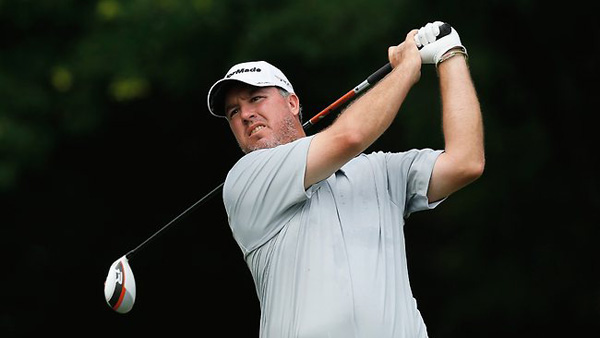
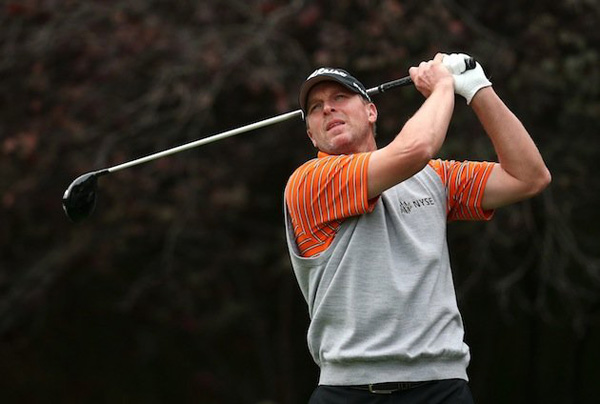
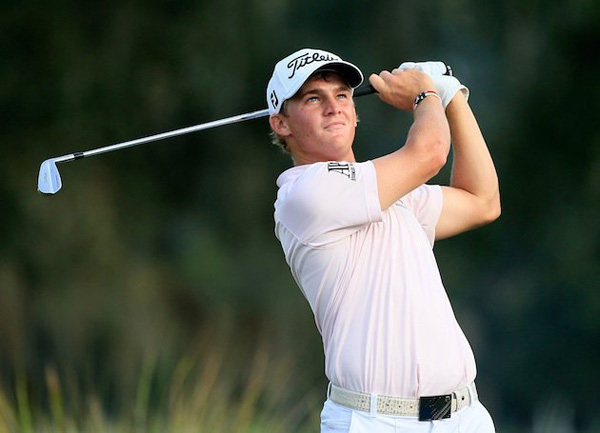
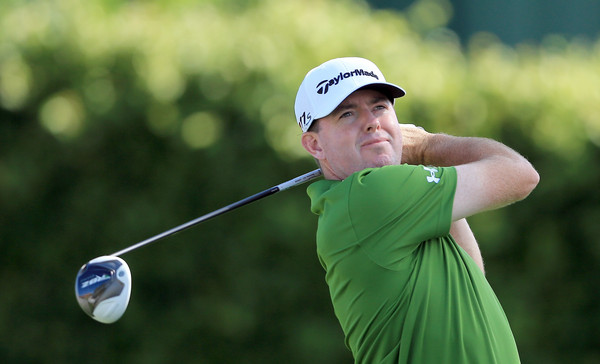
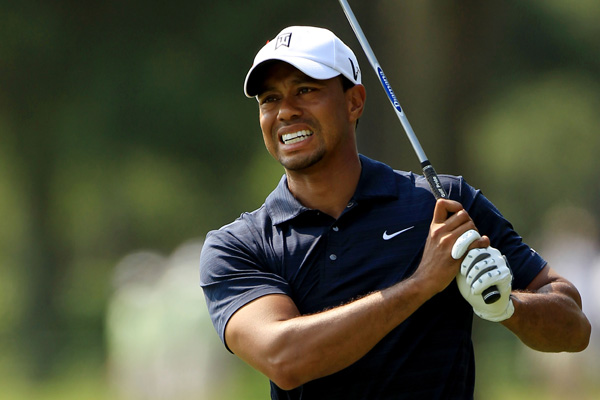
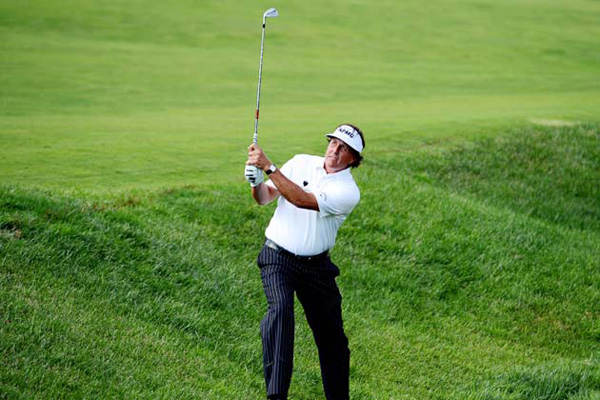
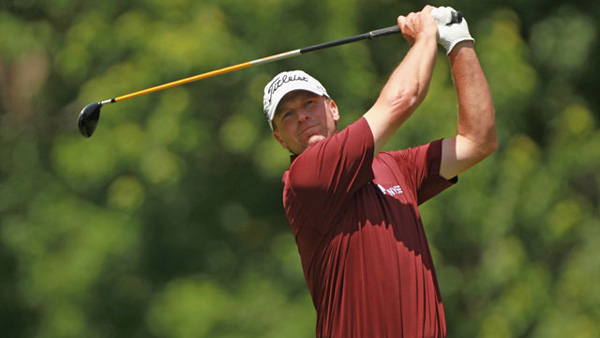
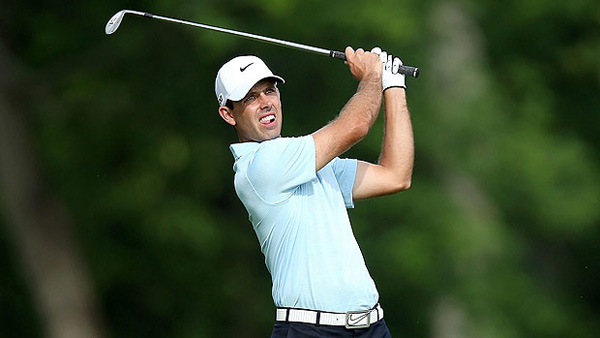
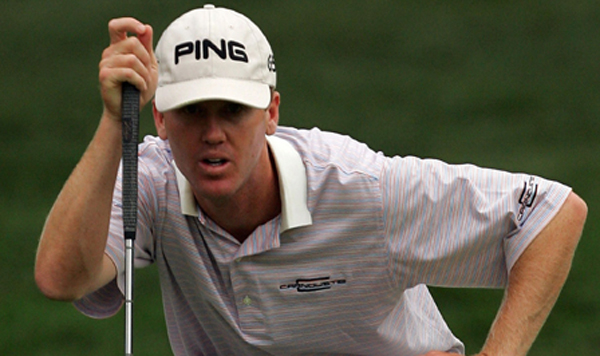
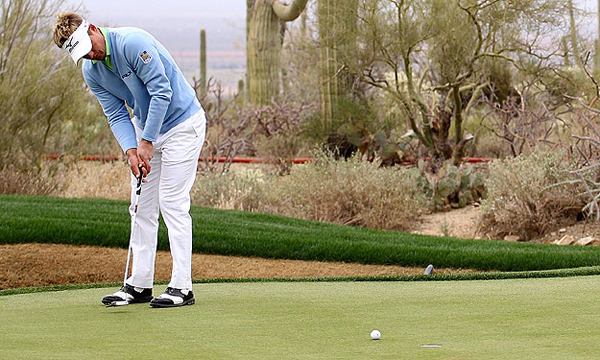


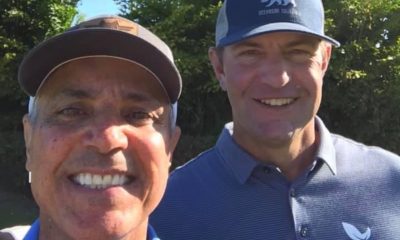









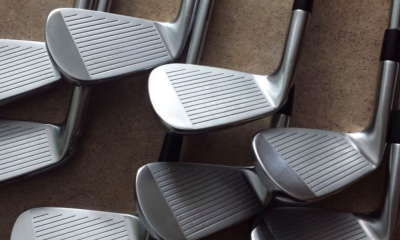













B MAC
Jul 13, 2013 at 3:36 am
Putting brandt snedeker ??
Richie Hunt
Jul 22, 2013 at 10:37 am
I agree. He’s one of the best on Tour. I would still take Luke Donald over him because that’s how incredible of a putter Luke Donald is.
wayne defrancesco
Jul 10, 2013 at 9:38 pm
You mention that from 75 to 125 yards players with less forward shaft lean tend to be better. Less than what? Poor players tend to have none, and so I end up teaching them to get as much as possible. What are the extremes? What is too much and what is optimum? What is the average for all players and what is Stricker’s average? What do you suggest as a goal? Is it different for different types of grass? Do it change for uneven lies?
As you can see, there are a lot of interesting questions when it comes to forward shaft lean. Rather than saying “less is better” it might be more instructive to be more detailed.
John
Jul 13, 2013 at 9:09 pm
I think he’s refereeing to your typical good ballstriker, people who can get around a course wit short g
Ame dictating score, not your average bloke who’s struggling to hit a 9 iron onto a green.
Richie Hunt
Jul 22, 2013 at 10:35 am
Wayne,
I try to stay away from actual instruction when doing these columns. I feel that is something best left to the professionals like yourself.
My comment was in regards to Tour players. The better Birdie Zone players tend to have less forward shaft lean at impact compared to the Tour as a whole. There are some players like Sergio that do quite well from this distance. However, Sergio has shown a lack of consistency from this distance over the years. Some year’s he’s great, other years he’s poor.
From the BZ for Tour players, it’s really all about distance control. When Tour players hits shots from longer distances, we start to see golfers with more forward shaft lean at impact doing better in these categories.
That’s why I tend to believe that BZ play is really about controlling the lean and there appears to be a correlation between players with less shaft lean on Tour and their ability to control that lean.
Obviously, your 20 handicap can likely use more forward shaft lean in general. But, if you have a 5 handicap that has major distance control issues with a wedge in their hand, they may want to develop a wedge swing where they have less forward shaft lean to help remedy that issue.
Tom Miller
Jul 9, 2013 at 10:53 pm
Next year you should add bunker shots / sand saves.
Richie Hunt
Jul 10, 2013 at 8:59 am
Thanks guys.
Tom – I wanted to do bunker shots, but the Tour’s recording of bunker shots is too vague for my tastes. I don’t like Sand Save % as a metric because it doesn’t really tell us if the golfer is a good bunker player or if they are a good putter.
They do have proximity to the cup from the sand, but it is for ALL greenside bunker shots. The problem is that the distances on those bunker shots can vary. So a golfer who is hitting it closer may be doing so because they have a shorter shot to begin with.
I have followed 20 different players for a project I’m doing throughout the year on Shot Tracker. From the limited data I have, I believe that Jason Day is the best bunker player on Tour.
paul
Jul 9, 2013 at 9:32 pm
I love golf stats and read all articles about them. keep it up!